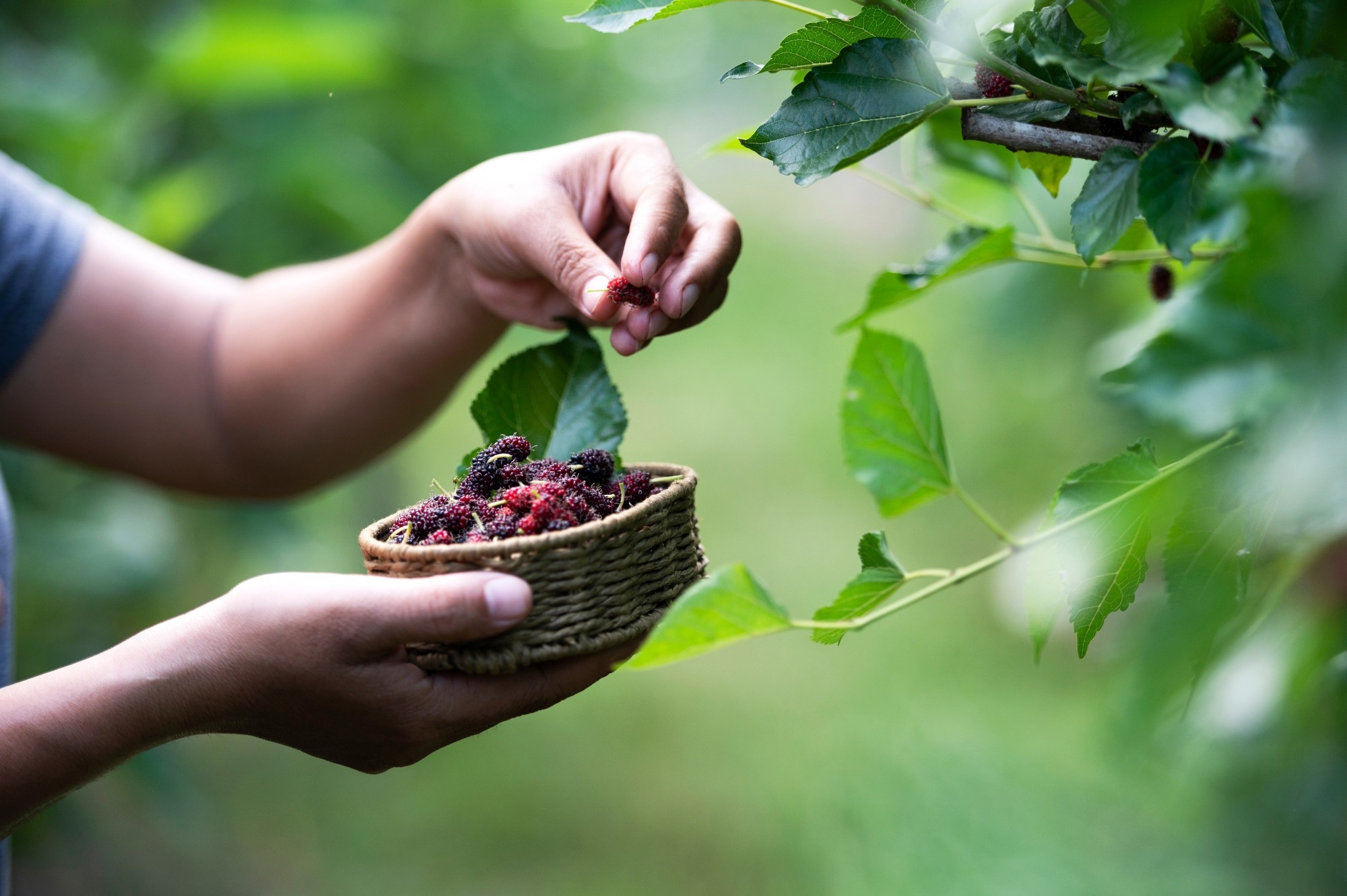Despite the development of vaccines and therapeutics, the coronavirus disease 2019 (COVID-19) pandemic has persisted due to the evolution of severe acute respiratory syndrome coronavirus 2 (SARS-CoV-2), the causal agent.
 Study: Mulberry Component Kuwanon C Exerts Potent Therapeutic Efficacy In Vitro against COVID-19 by Blocking the SARS-CoV-2 Spike S1 RBD:ACE2 Receptor Interaction. Image Credit: Somchai_Stock/Shutterstock
Study: Mulberry Component Kuwanon C Exerts Potent Therapeutic Efficacy In Vitro against COVID-19 by Blocking the SARS-CoV-2 Spike S1 RBD:ACE2 Receptor Interaction. Image Credit: Somchai_Stock/Shutterstock
Owing to genomic mutation, several SARS-CoV-2 variants have emerged that are more transmissible and virulent than the ancestral strain. Additionally, some strains can evade the immune response induced via vaccination or natural infection.
SARS-CoV-2 infection and treatment
The underlying mechanism of SARS-CoV-2 infection is associated with the binding of the spike S1 receptor-binding domain (RBD) of the virus with the angiotensin-converting enzyme 2 (ACE2) receptor of the host’s cell. Subsequently, spike S2 domain primed by transmembrane protease serine 2 (TMPRSS2) induces fusion of membranes to establish infection.
Developments in drug resistance and associated adverse effects have limited the use of certain drugs that were previously used for COVID-19 treatment. For instance, molnupiravir has been associated with reproductive toxicity, and some SARS-CoV-2 variants were resistant to remdesivir and paxlovid.
Hence, there is a need for effective COVID-19 drugs with multiple target sites. The therapeutic efficacy of the drugs against SARS-CoV-2 resistant strains could be enhanced by administering RNA replication inhibitors along with other drugs with varying mechanisms.
Medicinal properties of Kuwanon C
Many natural products have exhibited antiviral properties, which can be effectively used to manage the pandemic. Besides antiviral properties, these natural products are safe and can be produced cost-effectively.
Morus alba L. (mulberry plant) has been used as a source of traditional medicine due to its hypoglycemic, hypolipidemic, fever-reducing, antiatherogenic, anti-inflammatory, blood pressure-lowering, and antioxidant properties. Interestingly, this plant has also been used in manufacturing vinegar, wines, jams, and juices.
Several studies have demonstrated the antiviral efficacy of M. alba L. against human coronavirus (hCoV-229E) herpes simplex virus-1 (HSV-1), and influenza virus. These medicinal effects are due to the presence of important plant metabolites, which have been extracted from different parts of the plant.
Kuwanon C (KC) is a flavone, extracted from the root barks of M. alba L, exhibiting many biological activities. Some of the medicinal properties of KC include antiviral, antibacterial, neuroprotective, antioxidant, tyrosinase inhibitory, and anti-inflammatory effects. Although the efficacy of KC against SARS-CoV-2 has been investigated through in silico docking study with the ACE2 receptor, no in vitro experiments have been conducted to validate the same.
In vitro experiments
A recent International Journal of Molecular Sciences study determined the underlying antiviral mechanism of KC associated with the inhibition of SARS-CoV-2.
Molecular binding and in vitro assays were used to investigate the role of KC in inhibiting the interaction between spike S2 RBD and ACE2 receptor at the earliest stage of SARS-CoV-2 infection. The inhibitory effect of KC was studied using competitive enzyme-linked immunosorbent assay (ELISA), where neutralizing antibody against spike S1 RBD was used as the positive control. On increasing the positive control, chemiluminescence reduction was observed, which indicated that the spike S1 neutralizing antibody could effectively block the interaction between the ACE2 receptor and the spike S1 RBD coated plate.
Interestingly, the inhibitory effect of KC was found to be dose-dependent with an IC50 of 91.4 µM, at doses up to 100 µM. The BLItz system was used to evaluate the binding affinity of KC for the spike S1 RBD and the ACE2 receptor, which revealed equilibrium dissociation constants of 5.03 × 10−4 M and 8.11 × 10−4 M for the spike S1 RBD and the ACE2 receptor, respectively.
Pharmacophore analysis revealed that KC forms 17 interactions with spike protein and 27 with the ACE2 receptor. This analysis demonstrated that Asn501 of the SARS-CoV-2 spike protein is associated with the binding to KC through van der Waals interaction. Similarly, KC was found to interact with Asp30 and His34, while binding to the ACE2 receptor via van der Waals interactions. Docking simulation indicated that Tyr505 residue could influence the strong binding of KC through pi–pi T-shaped and pi–alkyl interactions.
The current study provided information about the molecular interaction between KC and the spike S1 RBD/ACE2 receptor. It also indicated that structural analysis of KC derivatives could warrant better binding efficacy for both proteins. Unlike the commercially available small molecule-based COVID-19 drugs that suppress RNA replication, KC prevents the early stage of SARS-CoV-2 infection by targeting both the spike S1 RBD and the ACE2 receptor.
Molecular docking simulations have also revealed that KC’s antiviral mechanism is affected by the mutations in the Omicron variant. This finding indicates that KC cannot effectively suppress the SARS-CoV-2 Omicron variant’s entry to host cells. Nevertheless, the efficacy of KC derivatives in suppressing the Omicron variant must be explored in the future. Further, KC’s chemical backbone can be exploited to develop effective therapeutic agents for COVID-19.